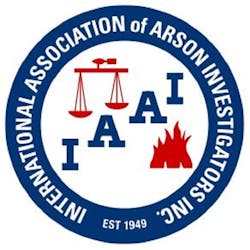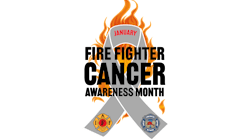The International Association of Arson Investigators (IAAI) has released a white paper that covers best practices related to health and safety, particularly as it concerns cancer prevention.
The white paper, which can be found here, was put together by the IAAI Health and Safety Committee after it was re-established in 2016 when it was deemed that health and safety practices and protocols for investigators had not been keeping pace with those of firefighters.
“Though they rarely receive the recognition of firefighters, fire investigators are typically at more fires than firefighters and for a longer time,” said Jeff Pauley, chairman of the IAAI Health and Safety Committee. “The health and safety dangers of arson and fire investigators are often greater than that of firefighters.”
The IAAI says the risks are often overlooked because investigators typically arrive to a scene hours or even days after a fire has been extinguished with less safety preparation and an assumption that because the fire is extinguished, the danger is diminished.
However, investigators are often on scene when fires remain active or are still hot, and many develop chronic health issues including respiratory conditions.
“Exposure to vapors, gasses and particulates can lead to a variety of dangerous health issues,” Pauley said. “Particulates are one of the biggest problems. Dust masks do very little to protect people from inhaling particulates.”
The white paper provides detailed information on the types of protections to use in various fire scenarios.
Protection is essential at hot scenes and there are two scenarios described:
- Fire has been extinguished but overhaul has not yet commenced or is in process.
- Fire has been extinguished but for less than two hours.
Both of these hot scenes are of greatest danger for fire investigators because of the potential for high levels of gases and particulates. A vetted NIOSH respirator is recommended along with a list of turnout gear and structural firefighter gloves.
A warm scene is when a fire has been extinguished at least two hours prior but less than 72 hours. This is the typical time frame when many investigators find themselves on scene and also remains dangerous due to potential exposure to toxic chemicals. Many of the same protections used in hot scenes apply here.
A cold scene is when a fire has been extinguished for at least 72 hours. While research indicates that particulate and gas hazards are greatly reduced after 72 hours, the disturbing of debris can stir up these hazards. For this reason, respiratory protection is recommended.
Other dangers to investigators include skin exposure to chemicals and contaminants. Research shows that firefighters have a greater incidence of skin cancer due to exposure, and investigators have the same exposure rates. Surveying and properly ventilating a site of gases and vapors will promote better health.
Similar to firefighters, investigators are also urged to properly decontaminate after working at a scene, removing soot-covered clothing and cleaning and wiping down skin that may have been exposed. Clothing or PPE and tools should be placed in sealed containers during transport or cleaned immediately.
“Some investigators mistake a cold fire scene as a safe fire scene,” added Pauley. “Many overlook the dangers that are there—even in those circumstances where the scene doesn’t appear to have any particulates or hazards.”






